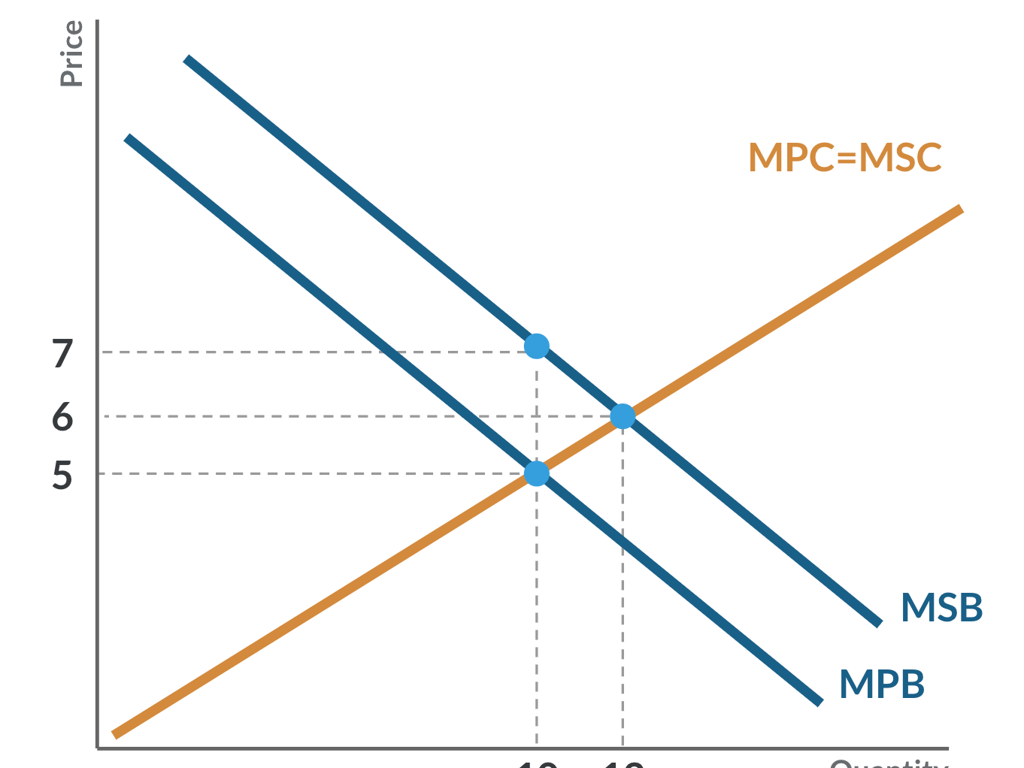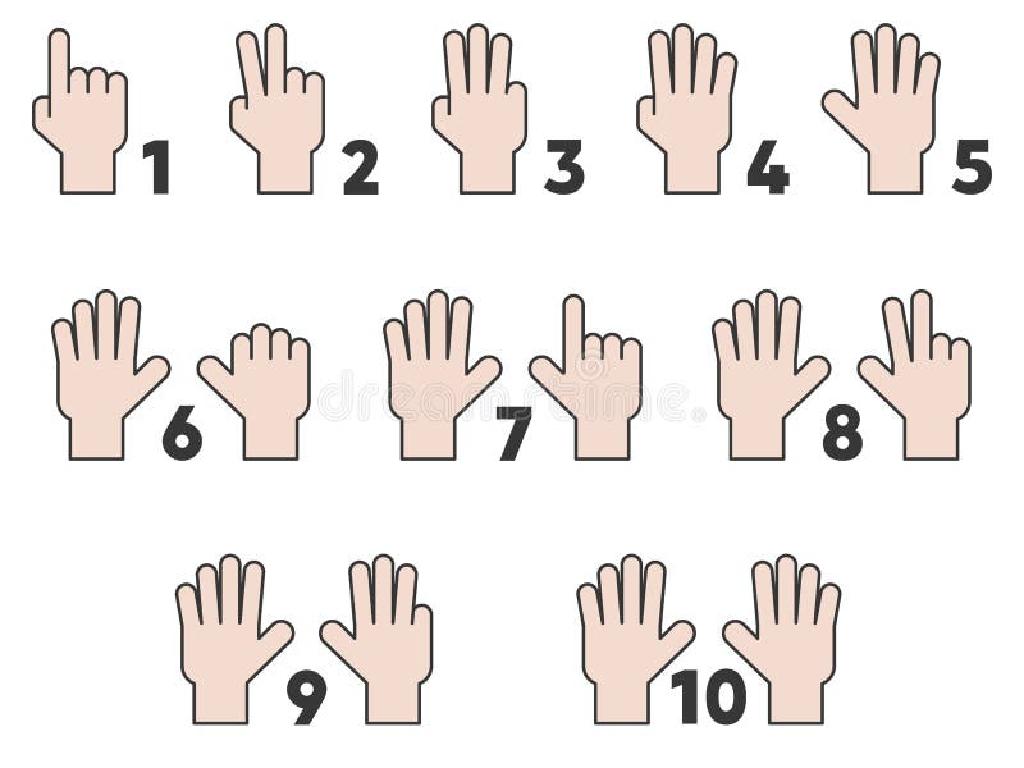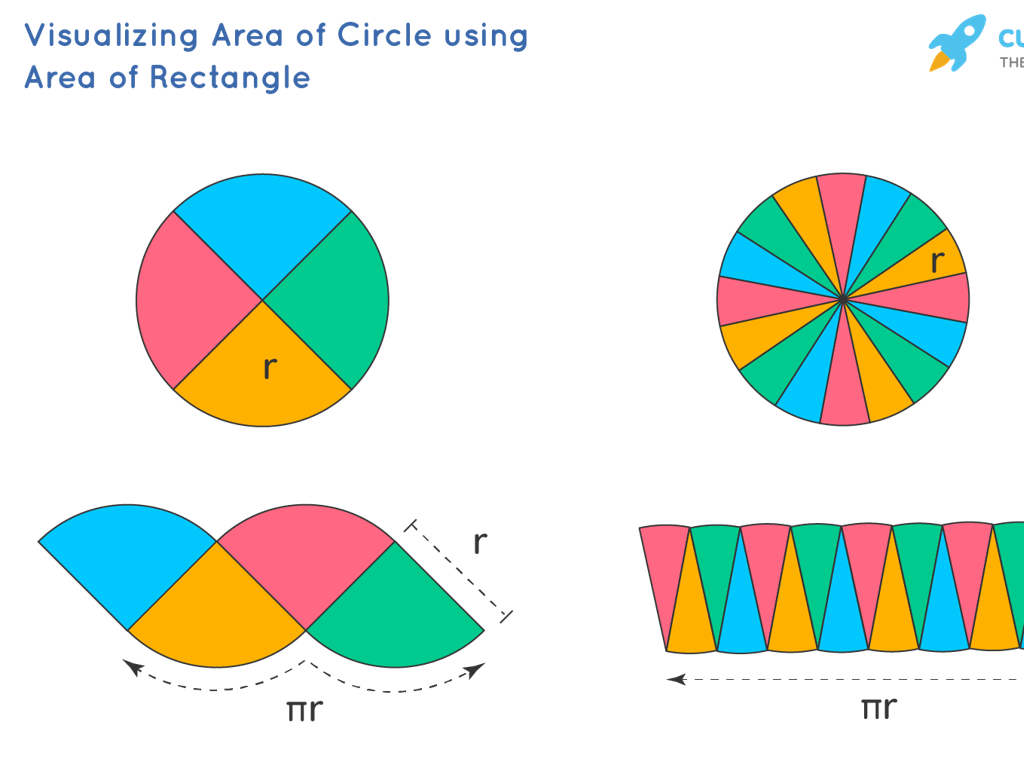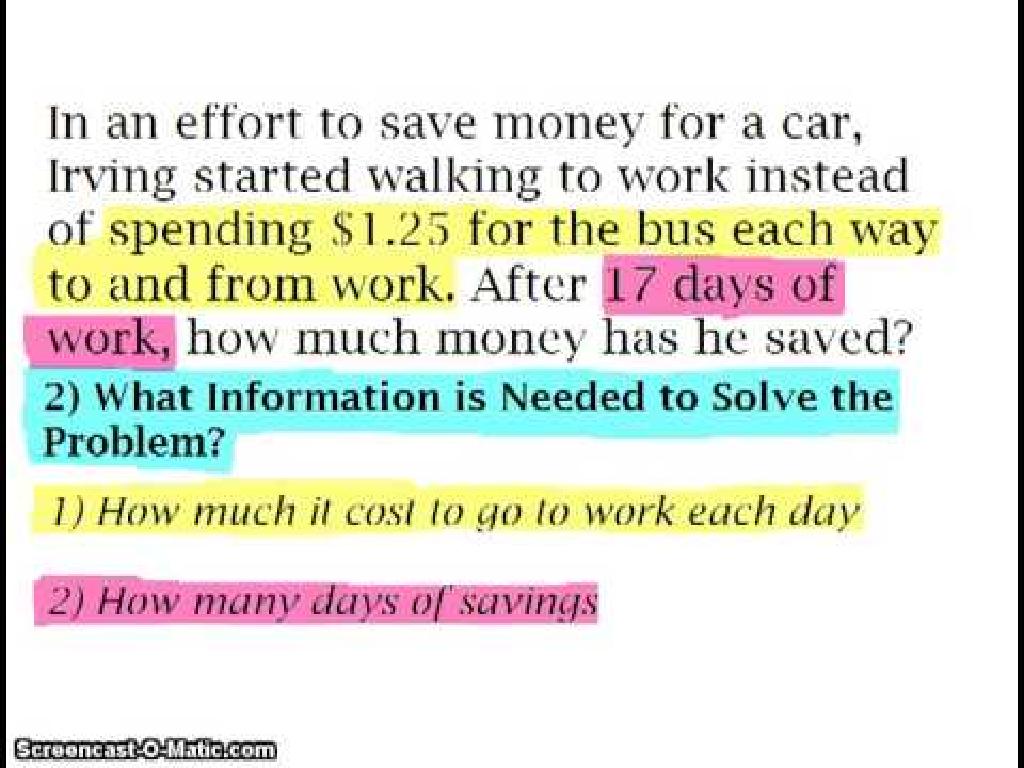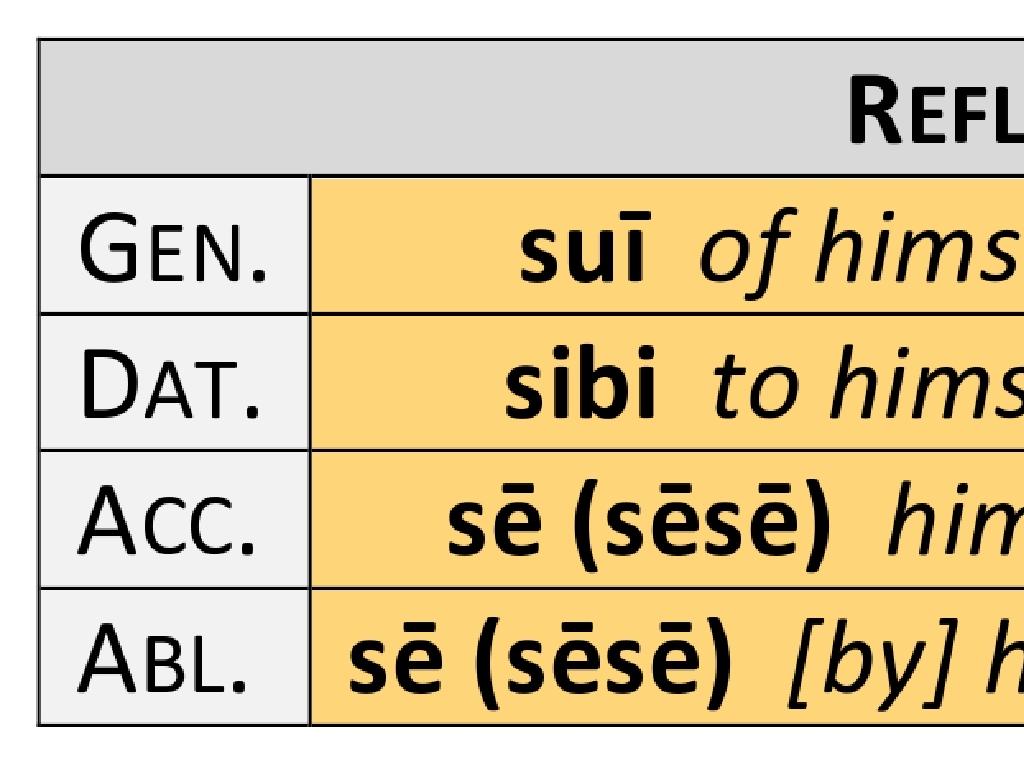Add A Two-Digit And A One-Digit Number - Without Regrouping
Subject: Math
Grade: First grade
Topic: Addition: Two Digits
Please LOG IN to download the presentation. Access is available to registered users only.
View More Content
Welcome to Addition!
– Learning to add numbers
– Add a two-digit and a one-digit number
– Example: 23 + 5
– Adding means putting together
– Practice with examples
– Try 34 + 7, or 46 + 2 on your own!
|
This slide introduces first graders to the concept of addition without regrouping. Start by explaining that addition is a way of putting numbers together to find out how much they are in total. Show them visually, if possible, how to add a two-digit number to a one-digit number by lining up the numbers vertically and adding one column at a time. Emphasize that they do not need to carry over numbers (regroup) because the sum of the one-digit numbers will always be less than ten. Provide several examples and encourage students to practice with numbers they’re comfortable with, ensuring they understand the concept before moving on to more complex addition.
Understanding Two-Digit Numbers
– What are two-digit numbers?
– Tens and ones in numbers
– Two-digit numbers have a tens place and a ones place.
– Example: Number 23 breakdown
– In 23, there are 2 tens (20) and 3 ones (3).
– Class activity: Number 15
– How many tens and ones are in 15? Let’s find out together!
|
This slide introduces the concept of two-digit numbers to first graders, focusing on the tens and ones places. Start by explaining that every two-digit number is made up of tens and ones. Use visual aids like blocks or drawings to show 2 tens and 3 ones making up the number 23. For the class activity, ask the students to identify the number of tens and ones in the number 15. This can be done with manipulatives or illustrations to help them visualize the breakdown. Encourage participation and assist students in understanding that the number 15 is composed of 1 ten (10) and 5 ones (5). This foundational understanding will be crucial for the next step, which is adding two-digit and one-digit numbers without regrouping.
Adding Without Regrouping
– Understanding simple addition
– What is ‘no regrouping’?
– When the sum of the digits is less than 10, we don’t carry over.
– Example: Adding 23 and 5
– 23 + 5 equals 28, no carrying needed!
– Practice makes perfect
– Try more examples to get better!
|
This slide introduces first graders to the concept of addition without regrouping. Start by explaining that sometimes when we add two numbers, the total is small enough that we don’t need to carry over to the next column of tens. Use the example 23 + 5 to show that we simply add the one-digit number to the two-digit number’s ones place. Emphasize that if the sum of the ones place is less than 10, we write the sum directly below the ones column. Encourage students to practice with similar problems to reinforce the concept. Provide additional examples like 34 + 4 or 51 + 3 for students to try during the lesson or as homework.
Let’s Practice Addition Together!
– I’ll write an addition problem
– We’ll solve it step by step
– Add the ones place first
– If we have 25 + 3, we add 5 (ones) + 3 first
– Then add the tens place
– Next, we add the 2 (tens) to our result
|
This slide is designed for an interactive class activity to practice adding a two-digit number and a one-digit number without regrouping. Write a clear addition problem on the board, such as 25 + 3. Guide the students through the process, emphasizing the importance of adding the ones place before the tens. Encourage them to speak the steps out loud as they solve the problem. After adding the ones, move on to the tens place, ensuring they understand they are adding ‘tens’ and not just single units. Possible variations for individual practice could include problems like 42 + 5, 37 + 4, or 68 + 2. This hands-on approach helps solidify the concept of place value and addition without regrouping.
Your Turn to Try: Adding Numbers!
– Practice with a worksheet
– Add two-digit and one-digit numbers
– Example: 23 + 5 = ?
– No regrouping needed
– Mistakes are okay
– It’s how we learn and improve!
|
This slide is to encourage students to apply what they’ve learned about addition without regrouping. Hand out worksheets with a variety of two-digit plus one-digit addition problems. Remind the students that the goal is to practice and that making mistakes is a natural part of the learning process. Offer support and be ready to help anyone who is struggling. After the activity, review the answers as a class to reinforce the concept. Possible activities could include pairing students to solve problems together, using manipulatives for a visual understanding, or creating a game where they can ‘shop’ with play money to add prices.
Class Activity: Addition Bingo
– Let’s play Addition Bingo!
– Solve addition problems
– Add a two-digit number to a one-digit number
– Cover the answer on your card
– Use counters or markers for covering numbers
– Aim for five in a row to win!
|
This interactive class activity is designed to help first graders practice adding two-digit and one-digit numbers without regrouping. Provide each student with a bingo card that has a variety of sums within the appropriate range. As you call out or display addition problems, students will solve them and then cover the corresponding answer on their bingo cards. Encourage students to use mental math or manipulatives if needed. The goal is to get five correct answers in a row, either horizontally, vertically, or diagonally. Prepare several rounds of the game and possible variations to cater to different skill levels. Reward all participants to keep the activity fun and engaging.
Great Work on Addition!
– Excellent adding two-digit and one-digit numbers!
– Remember, practice makes perfect
– Keep practicing at home with fun activities
– Try adding your age to different objects at home
– Excited for our next lesson on regrouping!
– Regrouping is when numbers add up to 10 or more!
|
This slide is meant to congratulate the students on their hard work and encourage them to continue practicing their new skills outside of the classroom. Emphasize the importance of practice in mastering addition without regrouping. Provide suggestions for simple addition activities they can do at home, like adding their age to the number of toys they have. Prepare them for the upcoming lesson on regrouping, ensuring they understand that it’s a natural next step in their math journey. The goal is to build their confidence and excitement for learning more complex addition.

